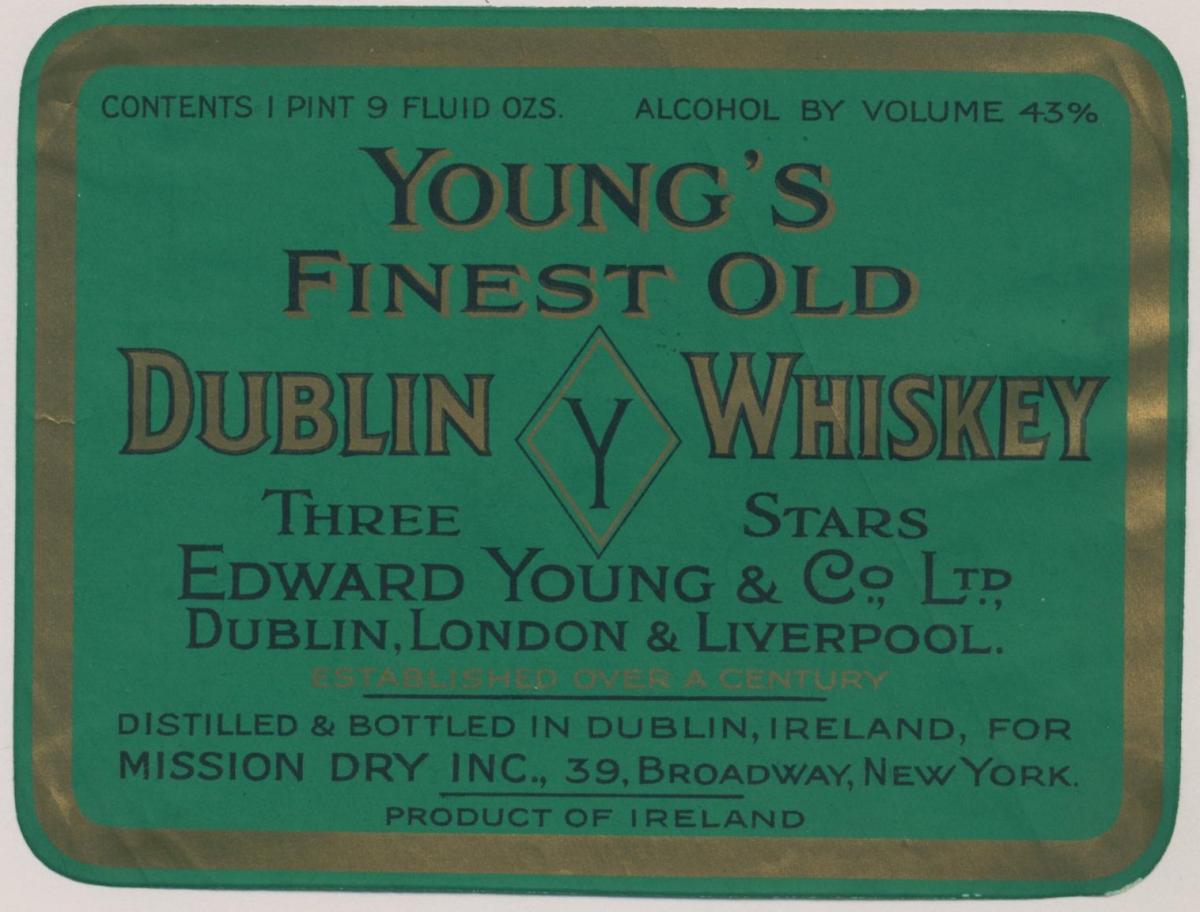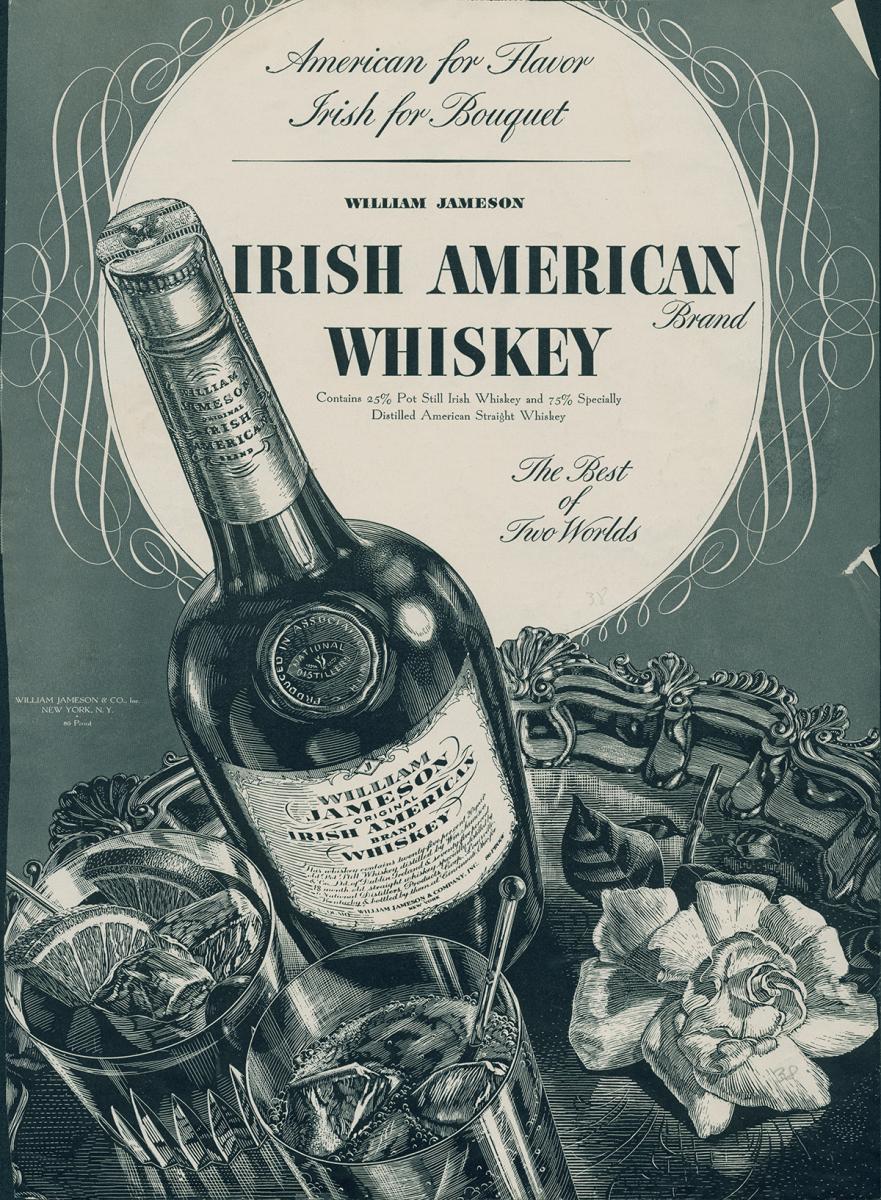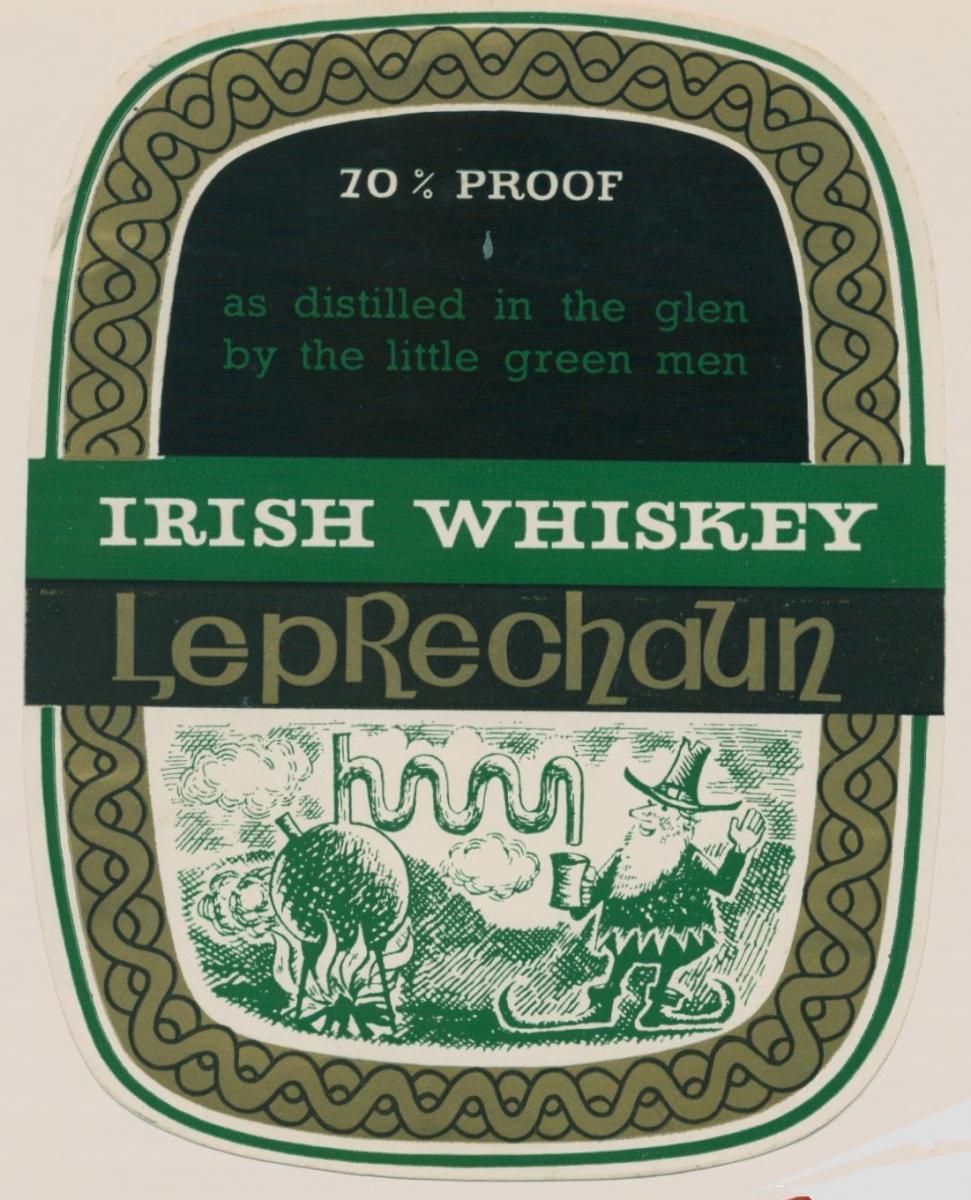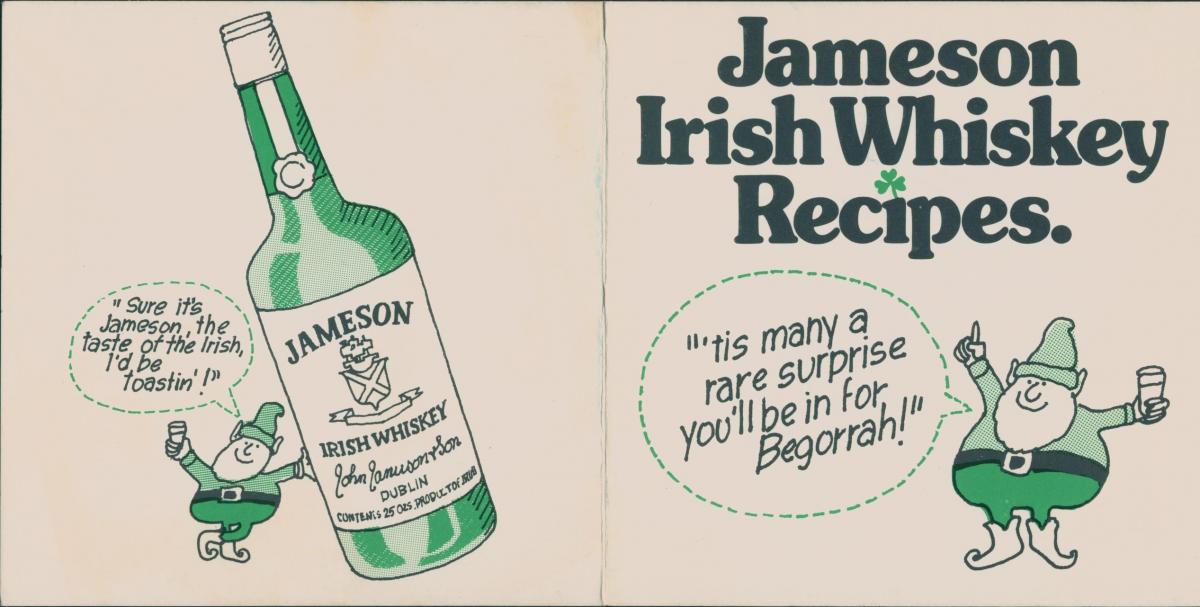Irish whiskey has been sold in North America since the eighteenth century. Jameson, established in 1780, has both name recognition and top-shelf associations at home and abroad even today. From Ireland’s perspective, whiskey has always been an important source of export revenue, with a carefully crafted image targeted at a quality niche consumer market.

Jameson’s influence can be seen in Young’s “Dublin Whiskey” which included “Three Stars” in its name. A typical nineteenth century text-heavy label, this includes a direct reference to Three Star Irish Whiskey, John Jameson’s leading brand, affectionately called “J.J.” in Ireland but recognized in America by its advertising after the turn of the twentieth century.
My research at Hagley, funded by an exploratory grant from the Center for the History of Business, Technology and Society, focused on how the iconography used to advertise whiskey made in Ireland adapted to American popular culture over time. It forms part of a book chapter on how consumers became familiar with a material concept of ‘Irish’ or, in other words, the commercialization of ethnicity.
After the end of Prohibition, a new generation of Americans had to be re-introduced to Irish whiskey. In 1934, William Jameson marketed “Old Dublin Whiskey” with a shamrock on the neck of the bottle, something totally unnecessary in the previous century. Then four years later, they introduced “Irish American Whiskey.” This was a blend of twenty-year-old pot stilled Irish (25%) and twelve-month-old straight Kentucky (75%) advertised as “especially created for modern living – especially recommended for civilized drinking” and for a “discriminating American public.” Ultimately, it did not have the same longevity as his brother John’s more traditional, and thus more authentic, Irish whiskey.

After World War II, Irish whiskey faced intense competition in North America from blended Scotch exports. By the mid-1960s the surviving Irish distillers, including Jameson, commissioned a motivational research study from Ernest Dichter, the inventor of the focus group. One of the challenges he identified was that perceptions of Irish whiskey were influenced by negative non-product prejudices about the Irish. “Then, of course, the reputation of the Irish is that you’d be taking a glass of Irish whiskey and be fighting in no time,” Dichter learned from interviews. “There’s a lot of people think that, you know.”
Among the solutions Dichter suggested to United Distillers of Ireland was to trigger positive responses. Thus, during the 1970s, the staid and respectable Jameson brand tentatively began to align its image with American ‘Irish’ symbols. Compare what Standen called a “gimmick” label on whiskey bottled for duty-free sale at Shannon airport in 1967 with a 1975 Jameson promotion.


Both demonstrate the influence of Walt Disney’s 1959 film Darby O’Gill and the Little People and the power of popular culture to sell Irish.
Marion R. Casey is a historian on the faculty at Glucksman Ireland House, New York University’s Center for Irish and Irish-American Studies.
